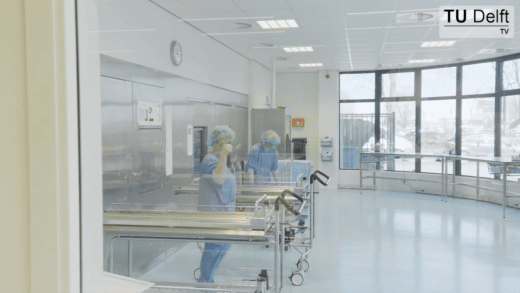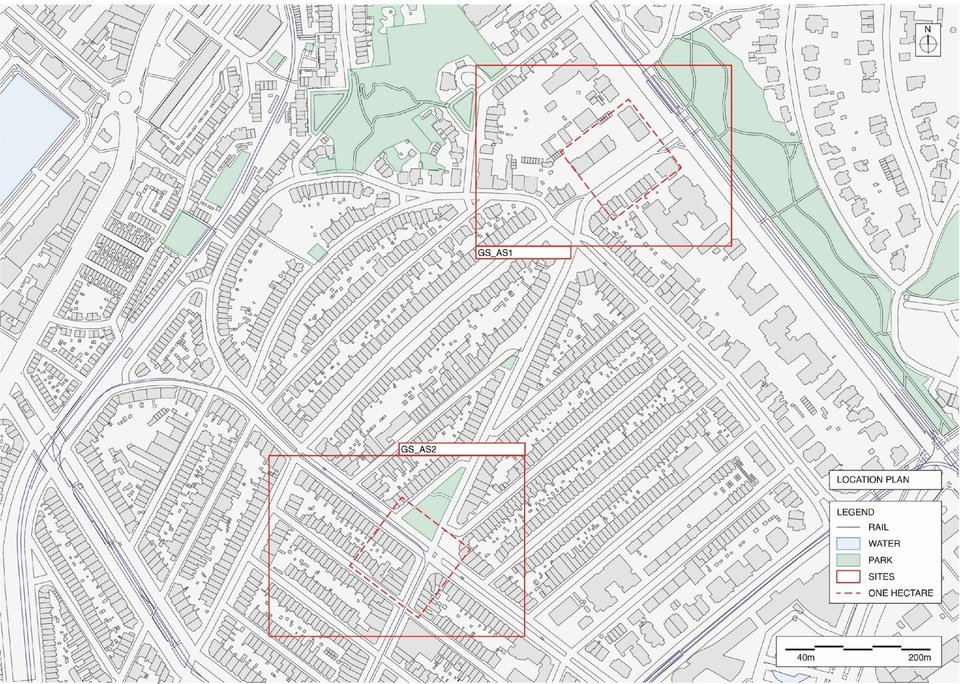Monitoring and ensuring the safety of hydrogen storage tanks over tens of thousands of airplane refuellings presents a unique challenge on the road towards low-emission aviation. Nan Yue, Assistant Professor in the Aerospace Structures and Materials Department, develops ultrasonic technology for detecting the very early signs of cracks appearing in the tank hull.
December 16th, 2024
Airplanes flying on hydrogen will store their fuel either under very high pressure or as a very low temperature liquid (at -253 oC). Changes in this pressure or temperature, for example at refuelling after each flight, will stress the tank hull to the point that micro-cracks will form and grow. With a hydrogen leak potentially leading to an explosion, structural integrity of the storage tank over a plane’s lifespan poses a serious risk.
“As a non-destructive inspection expert specialised in aerospace structures, I believe hydrogen-powered aviation is an excellent way to make a positive impact on climate change,” Nan Yue says. “I’m also very much drawn to the technical challenges involved in ensuring the structural integrity of hydrogen storage tanks.”

Structural health monitoring
What makes it so challenging is that integration into the airplane severely limits both visibility and access to certain parts of the tank. Yet, it must be inspected in its entirety. The very high aviation safety standards furthermore demand never-before reached sensitivity and reliability for any inspection equipment: cracks must be noticed way before any leakage happens, when they are still much smaller than a millimetre in size.
On top of that, Yue’s aim is not so much inspection but rather structural health monitoring. “It is the continuous monitoring of the tanks overall condition over time, allowing potential issues to be tracked before they become serious problems,” she says. “It’s not only diagnosis, but also prognosis – how long until we must take action.” This requires the monitoring equipment itself to also be lightweight and non-bulky as it will be part of the airplane.
As researchers we want to make impact, and we have to consider hydrogen if we want to achieve sustainable aviation.
Nan Yue
Ultrasonics
Yue’s proposed solution is called the non-linear ultrasonic guided wave method. “It involves sending high-frequency sound waves (ultrasound) into the structure. Any cracks in the hydrogen tank will reflect and/or scatter these sound waves, also changing their frequency. Measuring the altered signal at other locations provides information on crack size and crack location – spanning the entire tank structure.”
She already has ample experience with the ultrasonic method. But it needs to be downsized, and much improved to achieve the required sub-millimetre resolution in crack detection. Yue also wants her solution to be suited for both metal tanks and those made of novel composite materials. “We start with simulations, determining the ultrasound response based on best available knowledge of how microcracks will form and grow,” she says. “A subsequent major challenge to create real cracks of the proper size in a laboratory setting, which is needed to validate the sensing technology we develop.”
The importance of collaboration
Multi-disciplinary collaboration is key to achieve safe on-airplane hydrogen storage. Think of researchers in materials development and fatigue fracture experts, but also those developing pressure, temperature and hydrogen-detection sensors that may become part of the safety system. “My approach always is: What is the structure designed for, what are the safety requirements? I learn from other disciplines that have already been working on critical scenarios leading to unsafe situations. And in the end, we need the whole safety system to work together.”
Collaboration with industry is important too. She has already visited Airbus, which has a large team dedicated to making hydrogen-powered airplanes a reality. “They do a lot of destructive testing and proof-testing, aiming to have such planes airborne in the near future,” Yue says. “My own approach is more fundamental. Adding structural health monitoring may provide (even) more confidence in fuel tank safety as well as the means to be less conservative in tank design – saving weight.”
As a non-destructive inspection expert specialised in aerospace structures, I believe hydrogen-powered aviation is an excellent way to make a positive impact on climate change.
Nan Yue
Broad impact
Despite its promising application, the aviation industry has been slow in adopting structural health monitoring. Concerning hydrogen, however, they are very interested as it is so safety critical. Outside aviation, her method could facilitate faster and improved testing of hydrogen gas pipelines from off-shore wind farms to the mainland. And who knows what role it may play in other safety-critical hydrogen applications that will help drive the energy transition. “The good news given the strict aviation safety standards: If we solve the monitoring of crack formation for aviation, we solve it for many other applications.”
Also read:
If we solve the monitoring of crack formation for aviation, we solve it for many other applications.
Multi-disciplinary collaboration is key to achieve safe on-airplane hydrogen storage.

















